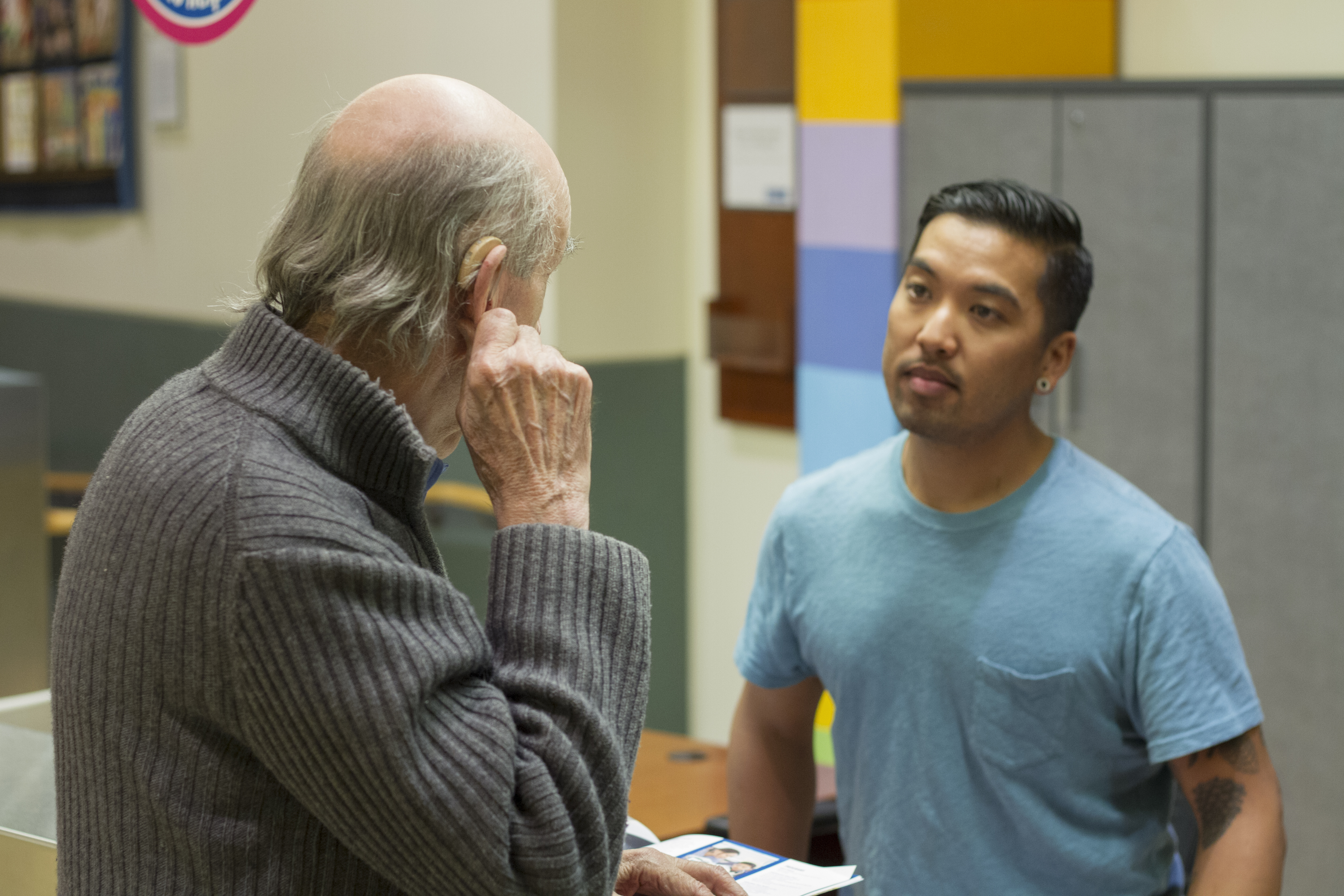People with Hearing Loss
People who have hearing loss may identify in different ways. They may be deaf, oral deaf, deafened, or hard of hearing. These terms are used to describe different levels of hearing or the way a person’s hearing was diminished or lost.
A person with hearing loss might use a hearing aid, an amplification device or hearing ear dog. They may have preferred ways to communicate, for example, through sign language, by lip reading or using a pen and paper.
Tips:
- Once a customer has self-identified as having hearing loss, make sure you face the customer when talking and that you are in a well-lit area so the person can see you clearly.
- As needed, attract the person’s attention before speaking. Try a gentle touch on the shoulder or wave of your hand.
- Maintain eye contact. Use body language, gestures and facial expression to help you communicate.
- If the person uses a hearing aid, reduce background noise or if possible, move to a quieter area.
- Don’t assume that the customer knows sign language or reads lips.
- If necessary, ask if another method of communicating would be easier (for example, using a pen and paper).
- When using a sign language interpreter, look and speak directly to the customer, not the sign language interpreter. For example, say “What would you like?” not “Ask her what she’d like.”
Describes a person who has severe to profound hearing loss, with little or no remaining hearing. Some use sign language, such as American Sign Language (ASL), to communicate. Others use speech to communicate using their remaining hearing and hearing aids, technical devices, cochlear implants, and/or lip reading (also known as speech reading).
[Adapted from Canadian Hearing Society online glossary]
[Adapted from Canadian Hearing Society online glossary]
Describes a person who has severe to profound hearing loss. Most use speech to communicate, using remaining hearing and hearing aids, communication devices or cochlear implants, and lip reading (also known as speech reading). Some use sign language.
[Adapted from Canadian Hearing Society online glossary]
[Adapted from Canadian Hearing Society online glossary]
Describes a person who grows up hearing or hard of hearing and experiences profound hearing loss slowly or suddenly. The person may use speech with visual cues such as captioning or computerized note-taking, lip reading (also known as speech reading) or sign language.
[Adapted from Canadian Hearing Society online glossary]
[Adapted from Canadian Hearing Society online glossary]
Describes a person who has hearing loss ranging from mild to severe, and occasionally profound. They use remaining hearing and speech to communicate. The person may supplement communication by lip reading (also known as speech reading), hearing aids, sign language and/or communication devices. [Adapted from Canadian Hearing Society online glossary]


